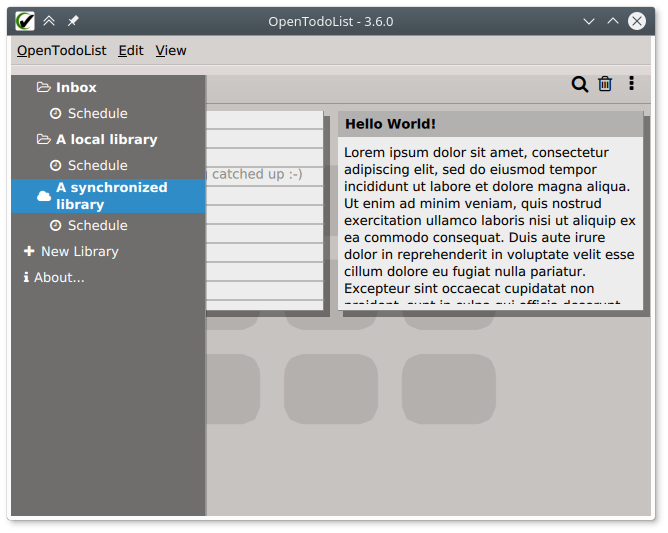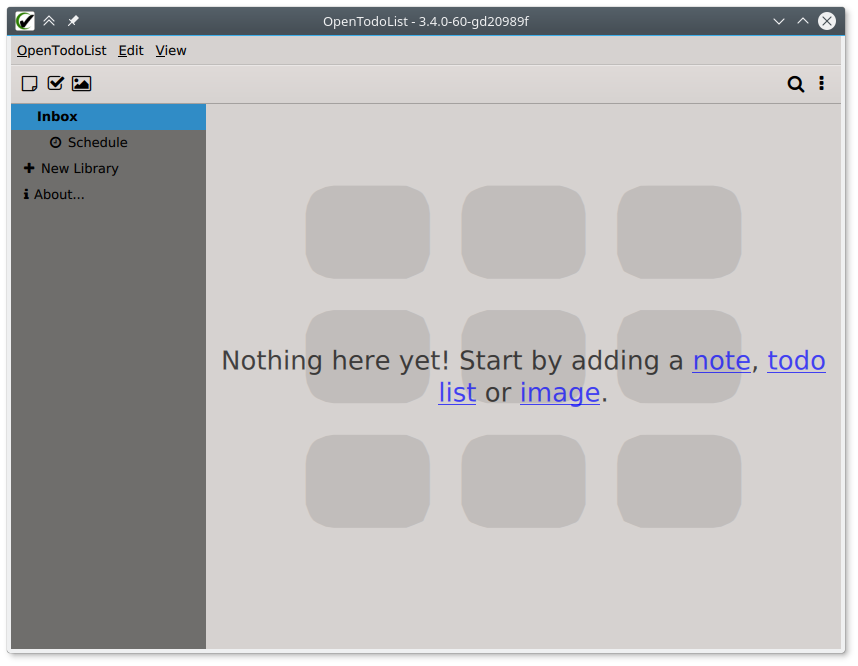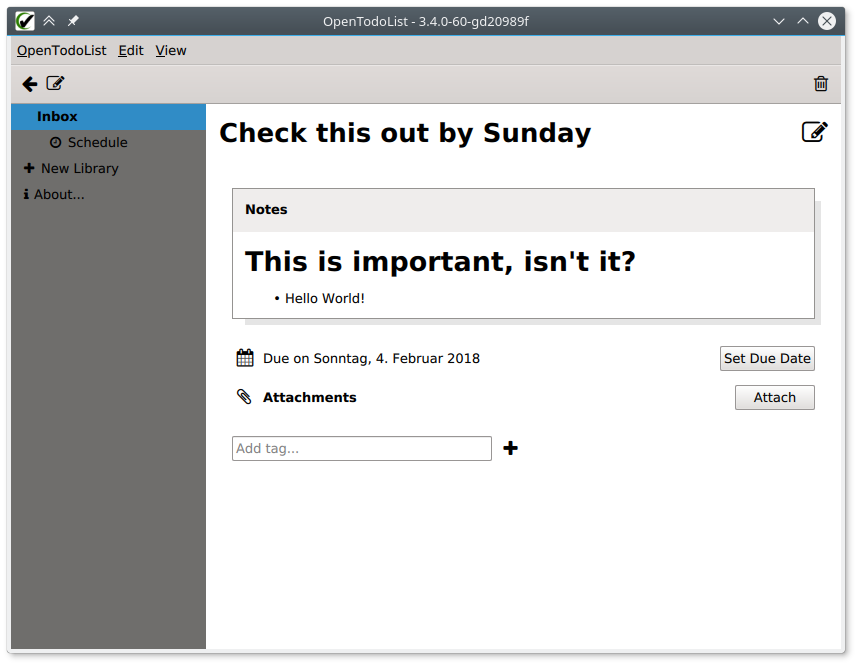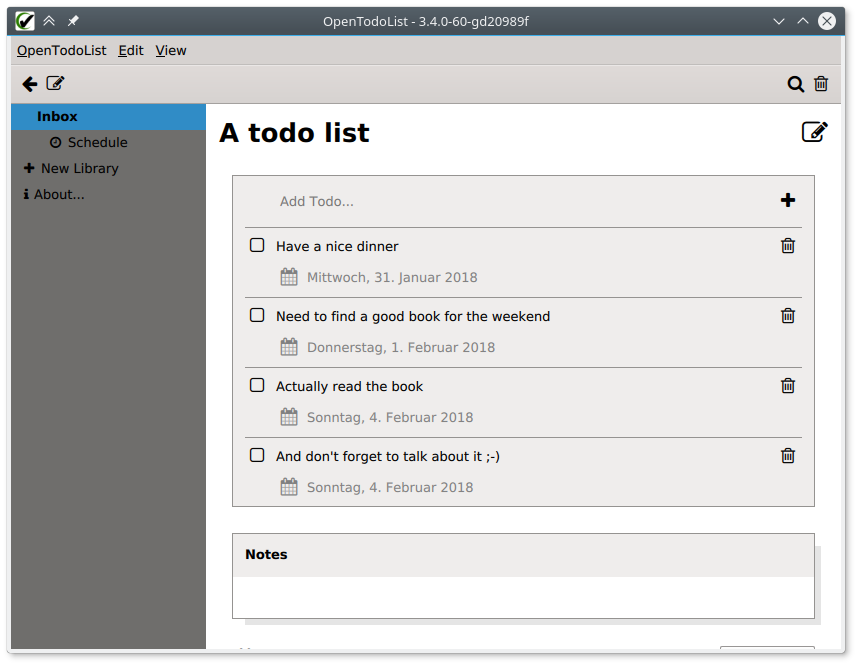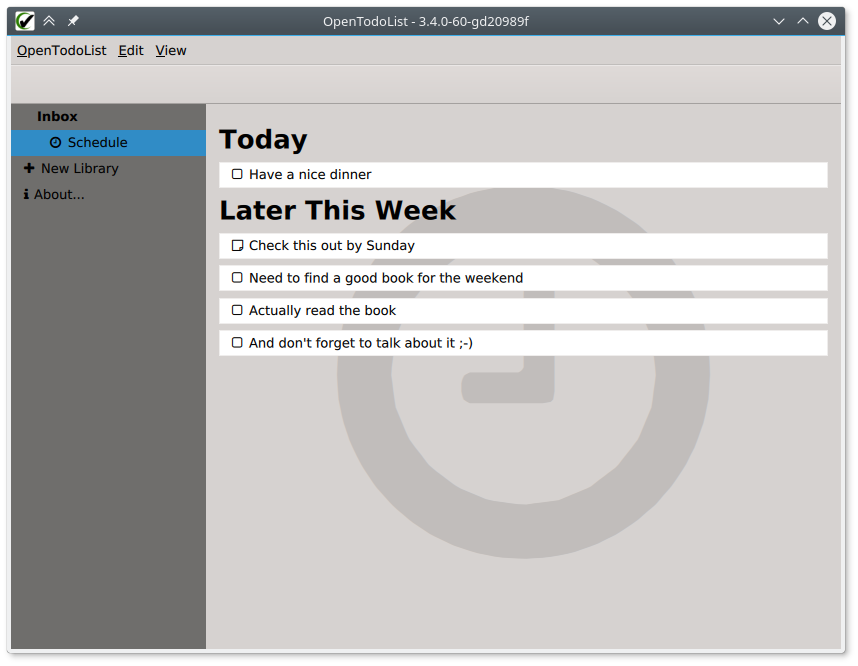It took a bit longer than usual, but better late than never: OpenTodoList 3.7 has been release! This version is all about cleanup of the graphical user interface spiced with some workflow changes.
Changelog
- The app now uses the Material theme on all platforms. This makes it easier to create a consistent experience throughout all supported OSes and device types we run on. The downside of the change is that on Desktop platforms you no longer have your desktop’s color theme (where applicable), however, ensuring the app looks great with all (or even just most) color themes is quite difficult and would require much more time - which simple is not possible given that OpenTodoList is developed as free time project.
- The above change goes hand in hand with a general cleanup of the user interface. This year, the app celebrates it’s fifth birthday already. There has been a lot of changes and re-iterations going on in these past years. As a result, the QML files which describe the app’s user interface were quite complex and - frankly - cluttered. With this version, the QML files are cleaned up and restructured in a more logical manner. This should help speeding up further changes in future versions. With the cleanup, the GUI has also been polished nicely.
- When building for Windows using the Microsoft Visual Studio toolchain, OpenSSL is not downloaded during the build - meaning we can remove the remaining pre-build binaries from the repository; an important step to get F-Droid compliant.
- Text inputs now generally wrap when entering longer texts. This makes entering text especially on touch devices much easier.
- There is no longer a default Inbox: The inbox was intended to be the default library used after starting the app for the first time. However, there are no features making explicitly use of this. Hence, the Inbox is no longer created when running the app. When you used the app before, you can just delete the Inbox like any other library.
- There was a bug showing update notifications: They were not shown due to a misconfiguration in the build system.
- Libraries can now be renamed.
- Item titles are now Markdown formatted everywhere.
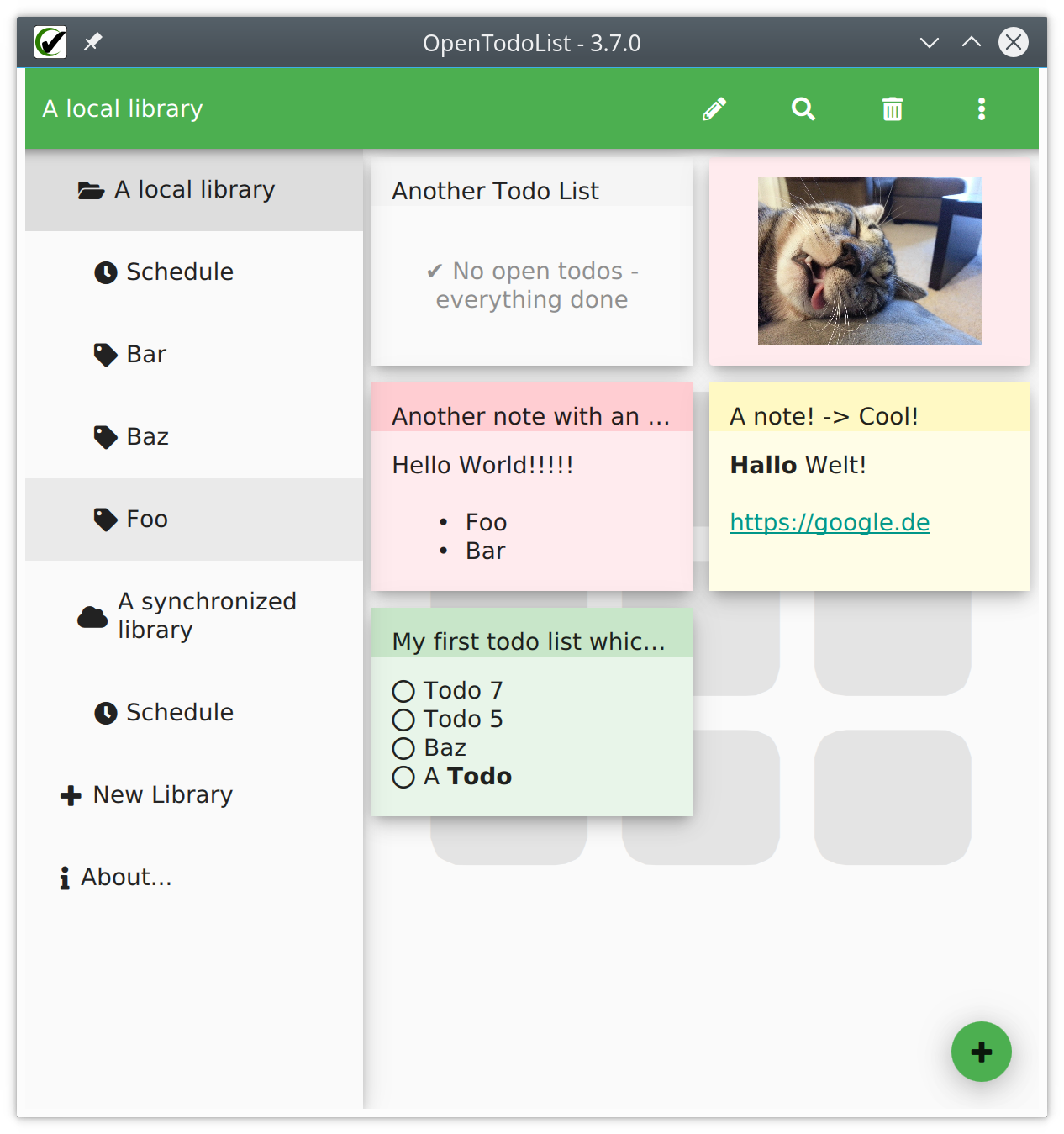
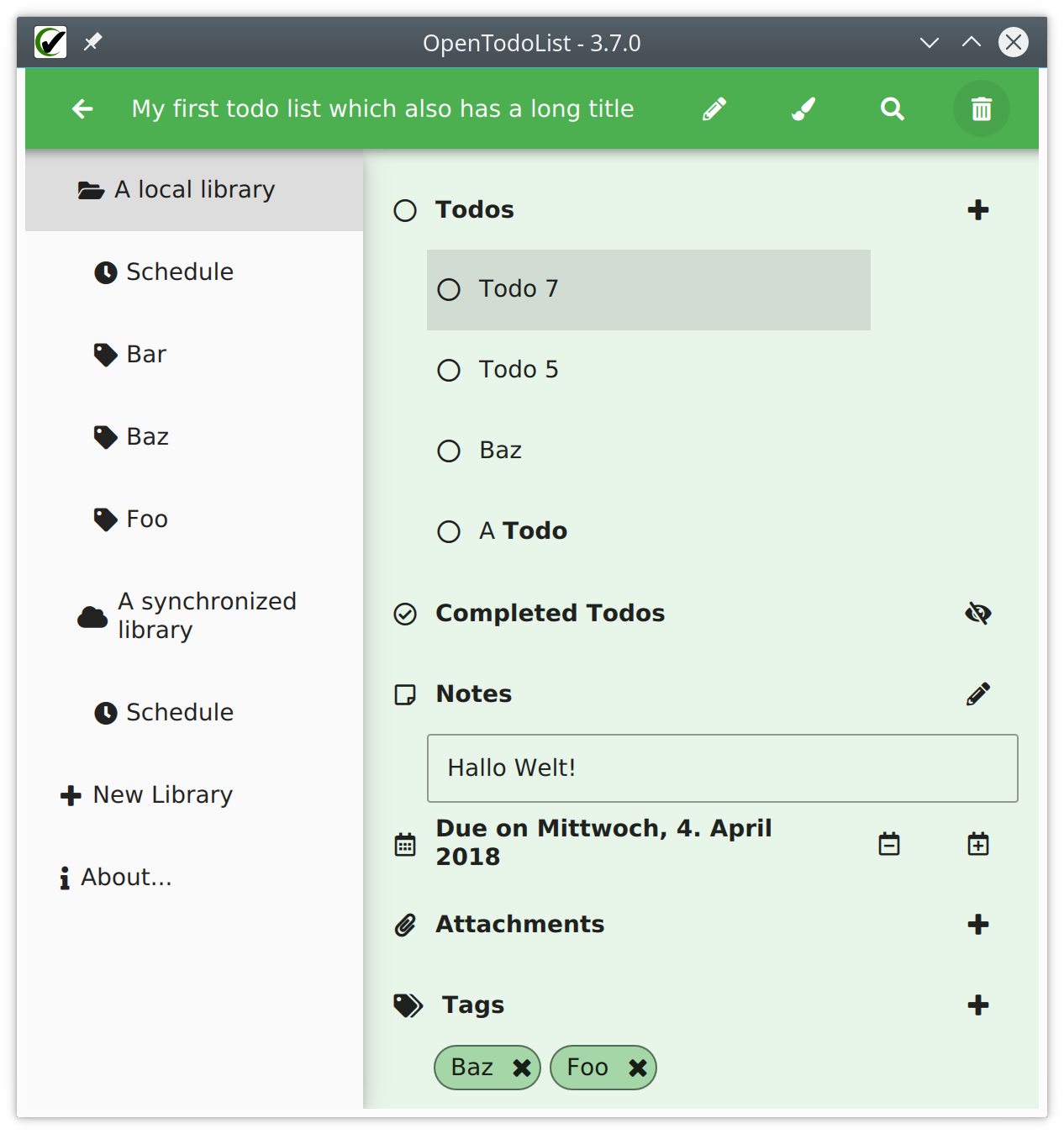

Downloads
Please find the download links for major platforms on GitHub. For Android, the release is available via Google Play.
Known Issues
- On Windows, make sure you have proper OpenGL support. The app strictly requires OpenGL to work. Most notably, when running within a Virtual Machine, chances are that starting the app will result in an error.

